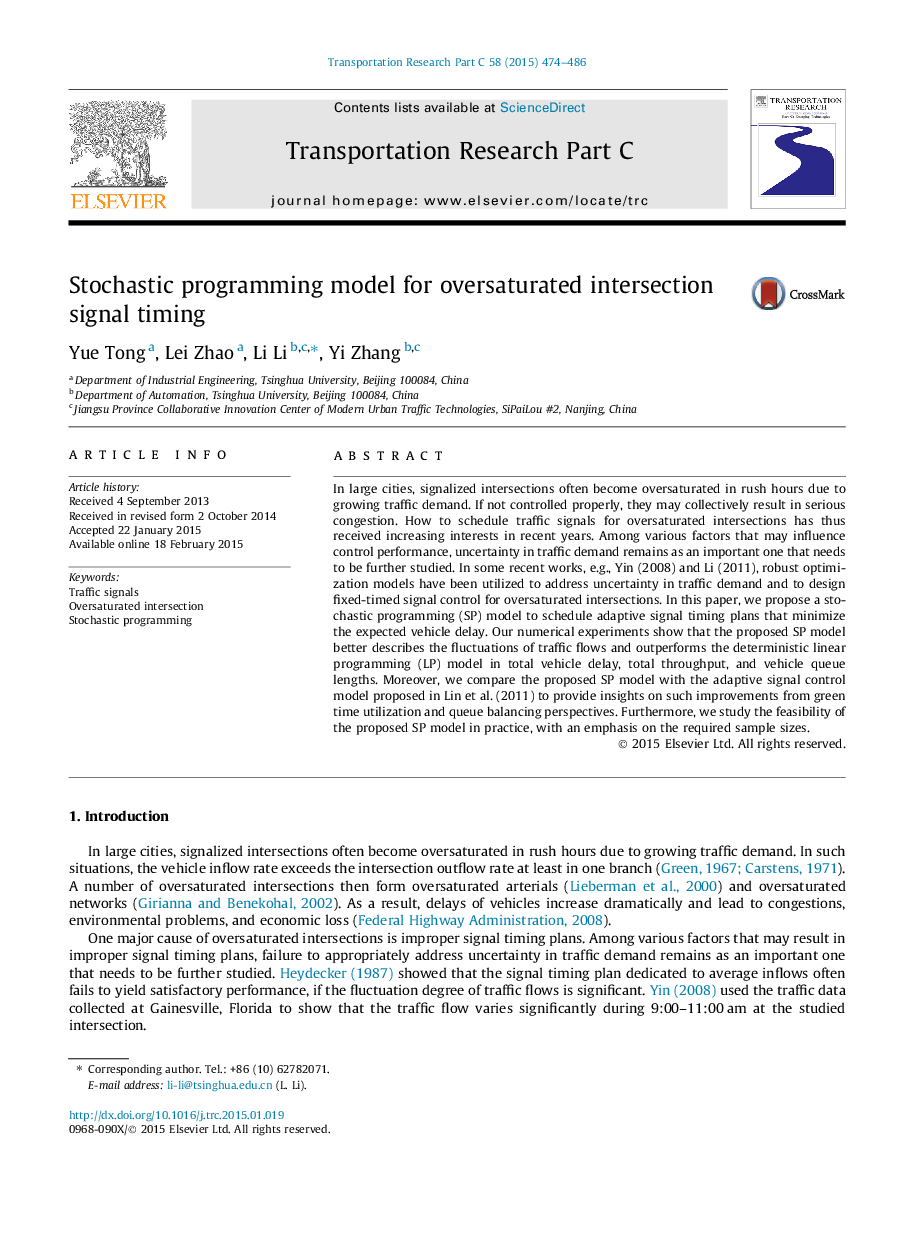| Article ID | Journal | Published Year | Pages | File Type |
|---|---|---|---|---|
| 524934 | Transportation Research Part C: Emerging Technologies | 2015 | 13 Pages |
•We propose a stochastic programming model for oversaturated intersection.•We show this new model gives better performance in total vehicle delay and total throughput.•We show that this stochastic programming model yield nice queue balancing property.
In large cities, signalized intersections often become oversaturated in rush hours due to growing traffic demand. If not controlled properly, they may collectively result in serious congestion. How to schedule traffic signals for oversaturated intersections has thus received increasing interests in recent years. Among various factors that may influence control performance, uncertainty in traffic demand remains as an important one that needs to be further studied. In some recent works, e.g., Yin (2008) and Li (2011), robust optimization models have been utilized to address uncertainty in traffic demand and to design fixed-timed signal control for oversaturated intersections. In this paper, we propose a stochastic programming (SP) model to schedule adaptive signal timing plans that minimize the expected vehicle delay. Our numerical experiments show that the proposed SP model better describes the fluctuations of traffic flows and outperforms the deterministic linear programming (LP) model in total vehicle delay, total throughput, and vehicle queue lengths. Moreover, we compare the proposed SP model with the adaptive signal control model proposed in Lin et al. (2011) to provide insights on such improvements from green time utilization and queue balancing perspectives. Furthermore, we study the feasibility of the proposed SP model in practice, with an emphasis on the required sample sizes.
